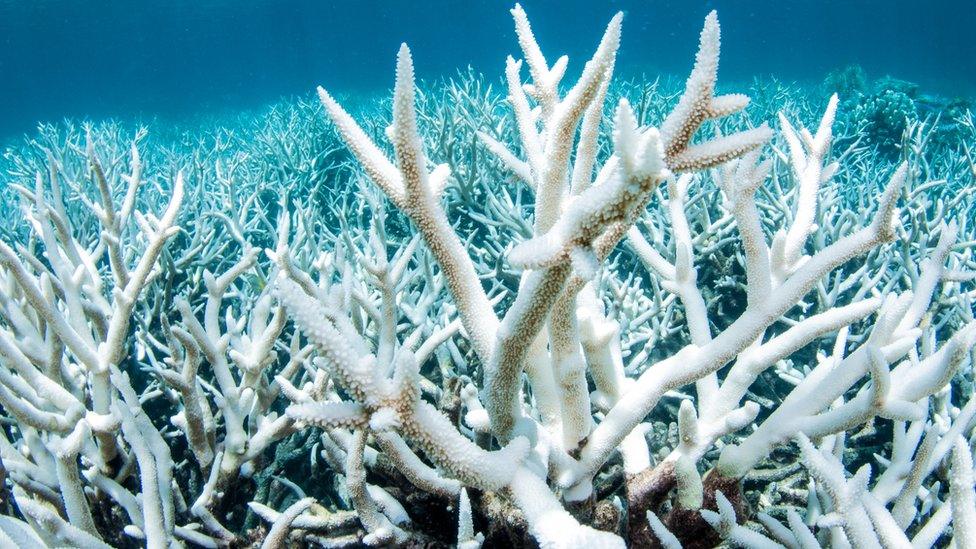Coral bleaching at Lord Howe Island is the most severe ever seen by scientists
- Published
- comments

Coral bleaching causes the large structures to become white
Scientists say that the coral bleaching at the world's most southern reef is the worst they've ever seen.
There are coral reefs all over the world - they are big underwater structures which look a bit like rock but are actually living like plants and trees, only under water. They are also home to lots of different species of sea life.
Coral bleaching happens when water becomes too warm. It means that algae that lives on the corals leaves the structures and the coral turns completely white. When coral is bleached it hasn't died, but they are at more risk and stress, which is bad news.
Due to climate change, warmer oceans, and the sea becoming more acidic, coral becomes white, brittle, breaks and dies, losing the ability to preserve marine life.
How does coral become bleached?
When scientists analysed the coral at the world's southern-most reef at Lord Howe Island (which is south-east of Australia), they found that sites near to the shoreline had up to 90% bleaching.
Coral reef sites in other places only had bleaching levels of 50%, 30% and in some areas as little as 5%. However, bleaching could become more common around the world as the sea continues to get warmer because of climate change.
The reef at Lord Howe Island provides a habitat for species that are found nowhere else on earth. Those species, and the coral itself, are now in danger because of the bleaching.
One of the scientific researchers, Bill Leggat, a coral biologist at Newcastle University says: "Reefs around the world are being affected everywhere, we're starting to see beaching in sites where wouldn't have previously expected to see it."
- Published10 April 2017
- Published23 September 2016
